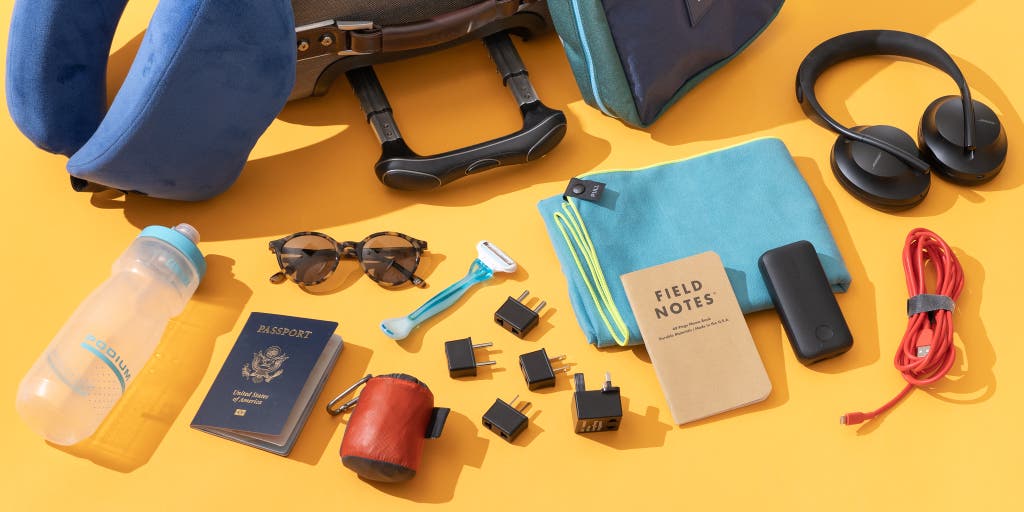There are a lot of things that affect a complete hiking or backpacking list, such as the season, climate, terrain, distance, activities, and personal preference. However, there is some gear that you should always have, whether you’re going on a long backcountry bushwhack or just exploring the trails in your local woods.
Make sure you have the right gear from each of the ten important systems below for safer and better-prepared front- and backcountry travel.
1. Illumination

You and I were meant to go on a short hike together before dinner, but you ended up being out beyond dark. In an emergency, a headlamp or flashlight can be the difference between an awkward walkout at night.
Backcountry tourists like headlamps because they are small, light, and don’t require their hands. A light should be brought on even short day walks, and small ones can be easily stored in a pack for emergencies. Always carry extra batteries and bulbs that work with your light.
- A light can be used to call for help in an emergency, and some have a flash feature.
- If your light, camera, and/or GPS unit all use the same batteries, you can bring less extra stuff. Just make sure that your headlamp and GPS won’t die at the same time.
2. Insulation (extra clothing)

Before you left the start, you did check the weather report, right? Pack at least one extra layer, and generally wind and/or rain gear as well, even if the weather report says it will be clear and warm. When you’re above the trees, the weather can change quickly.
It depends on the time of year and the activity. In the summer, you might bring a raincoat and long underwear tops and bottoms. In the winter, you might bring a warmer jacket, pants, gloves, a hat, or a mask. Avoid cotton all year because it loses its warmth when it gets wet.
Still don’t know what to bring? “What is needed to survive the worst conditions that could realistically be encountered on this trip?” is something that Mountaineering: The Freedom of the Hills tells you to think about.
- You can use extra socks on your hands and feet.
- Based on how you feel as you hike uphill, don’t judge. You’ll feel better when you stop moving.
- Figure out ahead of time whether you’ll be getting warmer or cooler and change your layers accordingly. This will keep your clothes dryer and your body temperature more stable.
3. Sun Protection
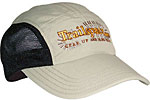
Sunglasses, sunscreen (for lips and skin), and the right clothes are always needed to protect against the sun, but they are especially important when you are on water, ice, snow, or at higher elevations. The higher you go, the more ultraviolet rays you’ll be exposed to, which makes you more likely to get skin cancer and dangerous sunburns.
- Sunglasses: All year long, sunglasses protect your eyes from UV light. Sunglasses, glacier glasses, and goggles can also help keep you from going blind from the sun bouncing off snow.
- Sunscreen: Sunscreen should have at least 15 SPF, but 30 is better. It should stop both UVA and UVB rays, and you should use it every time you go outside, even if it’s cloudy. Apply it again and again, even on your lips, especially if you’re hot or wet.
- Clothes: Depending on their material, weave, color, and amount of moisture, clothes offer different levels of sun protection. For example, a wet cotton T-shirt is not very useful. Some clothes are treated to absorb more UV light and have UPF scores that tell you how useful they are for hikes in the desert or other places where it’s very sunny.
- If you depend on contacts or prescription glasses, bring a backup.
- Bring an extra pair of sunglasses with you for trips with a group.
- For a stylish emergency eye shield, cut a piece of cardboard or fabric with small holes in it.
- Cover your face with a cap or hat with a brim.
- Remember to cover your neck.
4. Navigation
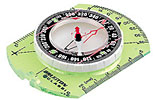
The 10 things you must bring on a trip rely on the trip and the person you ask. However, a detailed topographic map and compass have always been at the top of the list, ever since The Mountaineers Club made it public in the 1930s. A GPS receiver or altimeter may also be part of navigation tools, but a map and compass are the most basic ones. They don’t need batteries and can be used even in thick forests. You need to know how to use these tools, though, for them to work. You might want to take a lesson on navigation.
- Put your topo map away in a Ziploc bag or another waterproof cover or secure case.
- In an emergency, a compass with a viewing mirror can be used to send a message.
5. Fire

It is very important to be able to start and keep a fire going even when it is wet, cold, and windy. A fire can keep you from getting hypothermia by giving you heat, letting you make a hot drink, lighting up the area, sending a message, and boosting your mood. You might want to bring more than one type of fire starter with you as a backup because starting a fire is so important but can be hard to do in an emergency, especially if you have never done it before.
Pocket lighters that don’t get blown away are handy but don’t forget how useful waterproof matches can be. As the name suggests, a fire starter helps dry out wet wood quickly. You can buy fire starters, or you can soak lint or cotton balls in Vaseline and make your own. Even ones that won’t get wet or caught in a storm should be kept in a waterproof container.
- As the name suggests, strike-anywhere matches don’t need a special place to hit the ball. Safety matches, on the other hand, do, which makes them less useful.
- Don’t trust match packs that are too weak.
- Learn how to build a fire that will last longer than just starting the tinder.
6. First-Aid Supplies
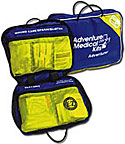
There are different types of first-aid kits, from the most basic ones that can be used on a day walk to ones that are more rugged and designed for long trips with lots of people. You can make your own or buy one already put together, but here are the bare necessities: bandages of different sizes, gauze pads, cleaning, over-the-counter painkillers, blister treatment, and any prescription drugs.
You can’t use a first aid kit if you don’t know how to use it. You might want to take a training in wilderness first aid and review your skills from time to time. With a small first aid guide in your kit, you and your trip companions will know what to do in case of an emergency, even if you’ve already taken a course.
- Make sure that your first aid kit fits the wants of everyone in your group.
- If there are women in your group, bring feminine care products.
- Bring paper and a pencil.
- Place all of your first-aid items in a bag or pouch that won’t leak.
7. Nutrition (extra food)
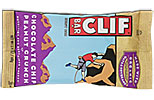
Always bring extra food with you on walks, even if they’re just one day. And that’s on top of having enough food for your trip. Things might go more slowly or your group might eat more than planned. For trips that last more than one night, you’ll need extra food for the next day. Extra food should be light, easy to make, and easy to keep.
- People who are hungry can be grumpy. Don’t forget to bring snacks.
- Pick things that you and your partner both like.
- Take out all the trash and food scraps.
8. Repair Kit and Tools
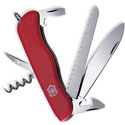
A pocket knife or other multi-use tool can fix broken gear, cut rope, make food, get rid of splinters, help with first aid, and deal with other problems that come up out of the blue. Multi-tools have more than one tool, like a blade, a screwdriver, an awl, pliers, and shears. However, each tool adds weight. That’s too many tools. You only need one corkscrew, two wire pliers, and three screwdrivers. Select a multi-tool that has a good knife and only the tools you’re likely to need.
- Use duct tape, which can fix almost anything, to wrap a water bottle.
- Zip-ties are small and light, and they can be used to fix things.
- You can fix important gear in the field with a strong sewing needle, thread, or even dental floss.
- On longer trips, you might want to bring a maintenance and/or repair kit for stoves and other gear.
9. Hydration (extra water)
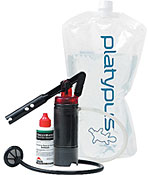
Bring enough water for each person and know where to find water along the way. As a general rule, each person should drink 3 to 4 liters (about 1 gallon) of water every day. How much water you need depends on many things, such as the temperature, the humidity, and your own health and activity levels.
Another factor is the supply of water. You can clean water on the trail with a water filter, cleaner, or chemical treatment (like iodine tablets). This will save you carrying weight. If you don’t want to get Giardia or other nasty bugs, you should always treat water, even if it looks clean.
- Before you start your hike from the beginning, drink all of your water and top it off.
- You should leave extra water in the car for when you get back.
- Check to see if you’re staying hydrated by checking how much, how clear, and how often you pee. A clear and plenty of signs is a good one.
- Sports drinks and gels can help you recover electrolytes when you’re on longer, harder hikes or backpacking trips.
- It’s easier to lose water in dry air in the winter.
- Make sure you have a way to melt snow for water in the winter.
10. Common Sense
You’ve told someone where you’re going and when you’ll be back, and now you’re ready to make your way to the trail. Remember the most important thing: use your common sense. Even the most advanced and award-winning gear won’t protect you if you keep climbing into a storm or get washed away while trying to cross a stream that is too high for you. Respect your own limits and the limits of your group, and you will be able to go on many more outdoor activities.
11. Emergency Shelter

Shelter is now one of the 10 basics, and what you bring with you will depend on the weather and season. Anytime you go camping, you’ll likely already have a tent, bivy, or tarp. But even on day hikes, you need to be able to make a shelter from the wind, rain, and snow.
You might want to bring an ultralight tarp, an emergency blanket, or a small emergency bivy sack. When it’s cold outside, having an emergency cover is even more important. Even on day trips, you might need to bring a four-season bivy or a small tent.
- A heavy-duty plastic trash bag can fit on the back of every person in a big group.
- Learn how to build a safe snow cave for the winter.
Conclusion:
If you get lost or hurt, a warning tool like a whistle or signal mirror can help people find you. It’s more likely that a search and rescue team will find you if you can be seen or heard well. Make sure kids know that whistles should only be used in an emergency.
Don’t count on a cell phone or other form of contact to get you help. But a cell phone or locator light might let people know if you’re going to be late, or it could help search and rescue teams find you. But don’t use your cell phone until you have to. Only use it in an emergency.

